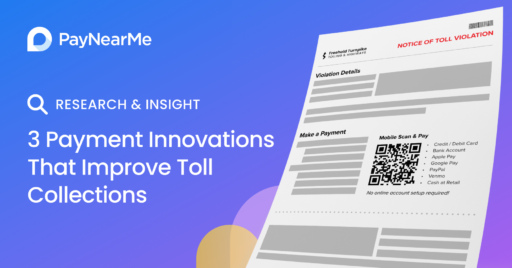PayNearMe closes $50M Series E
Read release
Business Login
Who we work with
Solutions
Auto & Consumer Lending
Modern, reliable platform for lenders.
TollingCollect more unpaid tolls.
iGamingOne platform for deposits, payouts & more.
Buy Here Pay HereEverything you need to collect payments.
Credit UnionsAn exceptional member payment experience.
Mortgage ServicingMeet the changing needs of customers.
Resources
Quick Links
Research Reports
View the latest research and trends.
Media ResourcesDownload brand assets, logos and more.
WebinarsView upcoming & on-demand webinars.
Case StudiesSee real results from current clients.
Buyer's GuideAn in-depth overview of the payments landscape.
VideosWatch on-demand webinars, podcasts and more.
Who we work with
Solutions
Auto & Consumer Lending
Modern, reliable platform for lenders.
Tolling
Collect more unpaid tolls.
iGaming
One platform for deposits, payouts & more.
Buy Here Pay Here
Everything you need to collect payments.
Credit Unions
An exceptional member payment experience.
Mortgage Servicing
Meet the changing needs of customers.

Schedule a Demo
Uncover how our platform can transform your payment experience.
Schedule a Demo
Resources
Quick Links
Research Reports
View the latest research and trends.
Media Resources
Download brand assets, logos and more.
Webinars
View upcoming & on-demand webinars.
Case Studies
See real results from current clients.
Buyer's Guide
An in-depth overview of the payments landscape.
Videos
Watch on-demand webinars, podcasts and more.

Schedule a Demo
Uncover how our platform can transform your payment experience.
Schedule a Demo
Support
About PayNearMe

Schedule a Demo
Uncover how our platform can transform your payment experience.
Schedule a Demo








